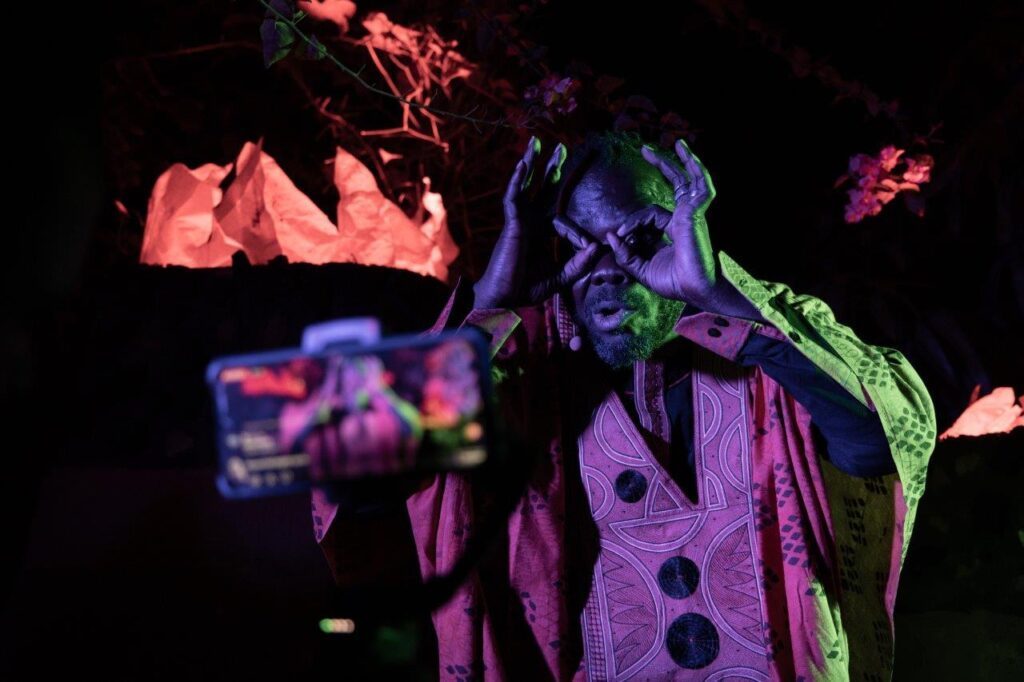Griot: New Stories to Tell

12.08.2021, by Giacomo Luperini
Having reached mainstream fame through Afrikan blues, the griot art and culture is now adapting to new languages and challenges, proving its tenacity and a strong connection to the present.
“ It is a profession as old as the world, answering to a very human need, a fundamental need: the need to tell stories. So long as there are two people on this Earth, there will be a storyteller and a listener. How many things are done, or would have been done, or would never have been done, if not for the possibility of recounting them! Without the memory of the past which is at the root of every story, our civilization would have come to a standstill somewhere at the beginning of time. There would have been no spur to undertake great conquests and great enterprises of any kind, and even heroic acts would have been rare, and mistaken for madness.“
Thus wrote Sebastiano Vassalli in his book “Un nulla pieno di storie” (“A Nothing Full Of Stories” (Interlinea; 2010) when describing the job of a writer, but his words are apt to convey the essence of our topic: griots and their destiny. The figure of the griot (traveling storyteller) is ancient, its origins lost in the mists of time and connected to a wide geographical area roughly coinciding with the ancient Malian empire, and encompassing a multitude of different cultures and languages.
Minstrels, bards, diplomats, custodians of knowledge, voices of a community. It is not easy to give a single definition of an across-the-board, multicultural and millenary figure such as that of the griot. The name itself, probably meaning “servant”, has been documented since the 17th century and is purposefully vague, a made-up French word used as a compromise among the different words used to describe its role. Names found in other African languages are helpful to put together a more specific definition of it: in the Malinké language, for instance, he is called some version of “djeli”, meaning “conveying through blood”, whereas in Wolof-speaking countries we find the term “géwél”, derived from “forming a circle around someone”. Generally speaking, griots are and still are connected to a family, forming a veritable pure-blood caste, in which melodies, expressions and atavic knowledge were handed down from one generation to the next and preserved by marrying caste members strictly amongst themselves. These men and women, pioneers of an art that is still alive in its secularized form today, followed a strict education that spanned decades and aimed to teach them to share the oral tradition of villages, kingdoms and dynasties through their poetry, music and acting. Since the 1970s, as world music grew in popularity, griots have been enjoying an increasing international success. The growing popularity of African blues kick-started a process of secularization and contamination which allowed for its proliferation outside the castes and dogmas of this tradition: jazz, blues, classical music, hip hop.
The teaching of griot melodies and sounds in music schools, such as those in Senegal where the korà and the balafon can be studied alongside Western instruments, allowed an increasing number of artists to employ this traditional musical repertoire as a base for new melodies.
Griot culture overflowed from the boundaries of its institutional and familial role, which, however, continues to survive through internationally renowned artists such as Toumani Diabaté, descending from 71 generations of griots. More and more often griot-inspired sounds are reaching famous musicians who can claim no “blood” relation to this tradition. Such is the case for Rokia Traoré, the Malian musician who approached this genre from blues and rock, though she belongs to an aristocratic caste which has long been seen as “opposite” to that of griots.
But no art nor any caste can be impervious to the influence of a culture which even managed to overcome the challenges posed by Covid 19 and lockdowns. In Burkina Faso, a griot tale podcast hosted by Kientega Pingdéwindé Gérard (KPG) was a resounding success, gathering thousands of people around screens every night and reaching international fame.
Griots survived for millennia to changes in kingdoms, peoples and cultures, and still survive today by perfectly and eclectically adapting to our 21st century globalized community, and to its new modes of expression. Faced with new challenges in communication, the ancient art of the griot appears anything but old-fashioned, and continues to proliferate in both volume and types of content. So long as there are stories to tell, we will need someone to tell them, and that is what griots are here to do.
LEARN MORE
Un nulla pieno di storie
Lo streaming del griot
origini del griot





